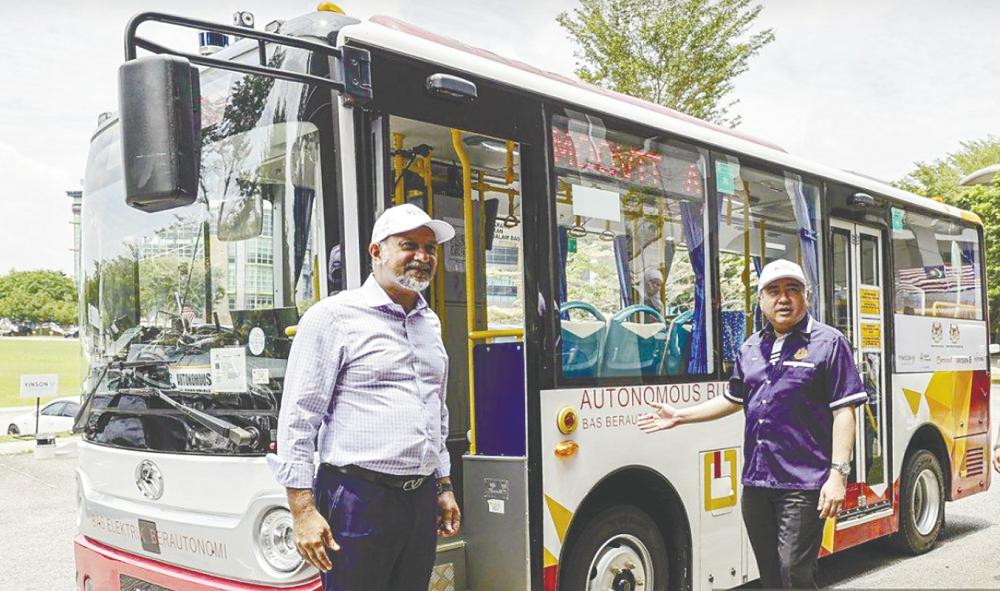CYBERJAYA: Digital technology’s potential to transform public services and the government’s ongoing efforts to strengthen Malaysia’s cyber infrastructure will position the country as a digital leader in the region.
Digital Minister Gobind Singh Deo expressed optimism about the impact of 5G technology and its potential to enhance public services in the country.
“The current 5G trials, particularly in autonomous public vehicles, are a key example of how this technology can enhance user safety and connectivity. This push aligns with the government’s broader vision of positioning Malaysia as a digital leader, where technology plays a vital role in improving everyday life,” he said at the 5G Use Case demonstration on autonomous bus at Futurise Centre today.
“The trials demonstrate the government’s commitment to connecting communities better and improving the overall public experience. Malaysia’s drive towards digital transformation aims to create smarter, more efficient services for its citizens and elevate the country’s standing as a hub for innovation,” he said.
Gobind praised Malaysia’s 5G network, developed by Digital Nasional Bhd (DNB), for its global recognition in speed and reliability.
Looking ahead, he encouraged industry players, especially those in the transport sector, to adopt 5G and other digital technologies to drive their growth and embrace the future of digital innovation.
DNB, the nation’s 5G network provider, technology giant Ericsson and local autonomous vehicle solutions developer eMooVit Technology Sdn Bhd held a demonstration to showcase several 5G-enabled use cases designed to enhance user experience and safety on an autonomous electric bus that is currently being tested for deployment.
The collaboration, which follows a memorandum of understanding signed among the three partners in May, involves the proof-of-concept trial of 5G use cases, such as in-vehicle 5G public WiFi connectivity, real-time remote vehicle monitoring and journey log collection.
Once commercialised, the use cases, including in-vehicle CCTV and real-time telemetry data monitoring, will make autonomous bus rides safer and more reliable for passengers and help improve the bus operator’s cost efficiency.
Future use cases to be trialled include integrating the autonomous bus with smart city infrastructure and 5G remote driving in emergencies.
During the event, a 5G-enabled eMooVit autonomous bus ride session was held for Gobind and Transport Minister Anthony Loke, as well as leaders from DNB, Ericsson and eMooVit, together with media members, around eMooVit’s headquarters in Cyberjaya.
“Malaysia’s 5G network rolled out by DNB is already globally recognised as one of the best in the world in terms of speed and reliability. With our continued efforts to accelerate 5G adoption amongst enterprises, we hope to see transportation industry players embrace digital technologies to take their
business to the next level,” Gobind said.
Loke said the benefits of autonomous transport range from improved traffic flow to route optimisation, which leads to smoother traffic patterns, more efficient use of road infrastructure and reduced human error. There is also the potential to be more energy-efficient and environmentally friendly, mainly if electric vehicles are used, as they reduce greenhouse gas emissions and air pollution in urban areas.
“The Transport Ministry encourages the development and adoption of Next- Generation Vehicles (NxGV) in Malaysia and certainly welcomes this initiative to trial 5G use cases in the autonomous bus,” he said.
Elaborating on how 5G connectivity enhances autonomous mobility, DNB chief strategy officer Datuk Ahmad Zaki Zahid said Malaysia’s 5G network provides the digital infrastructure required for autonomous vehicles to operate more safely, efficiently, and effectively.
“It enables real-time, reliable connectivity for data processing, mapping, and integration with other systems, which play vital roles in shaping the future of transportation.
“5G also facilitates improved communication between vehicles and with infrastructure such as traffic signals, road signs, and centralized traffic management systems. Through 5G-enabled CCTV and real-time systems monitoring by the command centre, bus passengers can enjoy peace of mind, knowing their safety is enhanced.”









